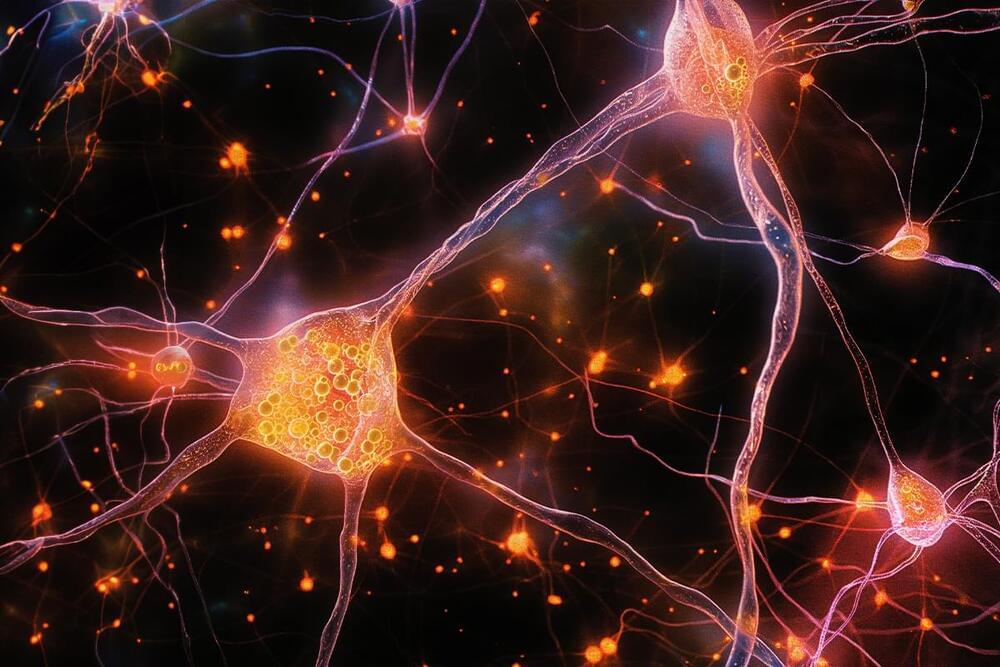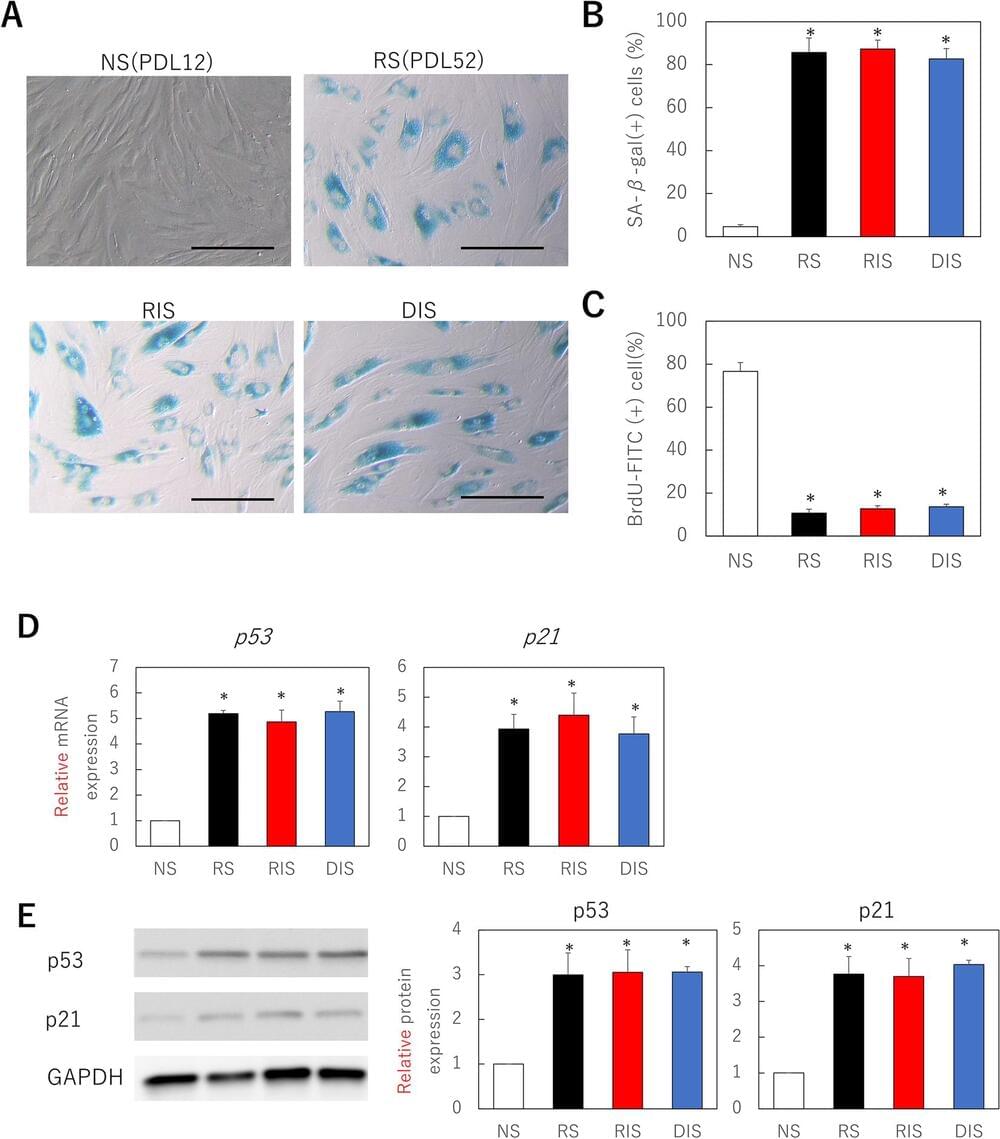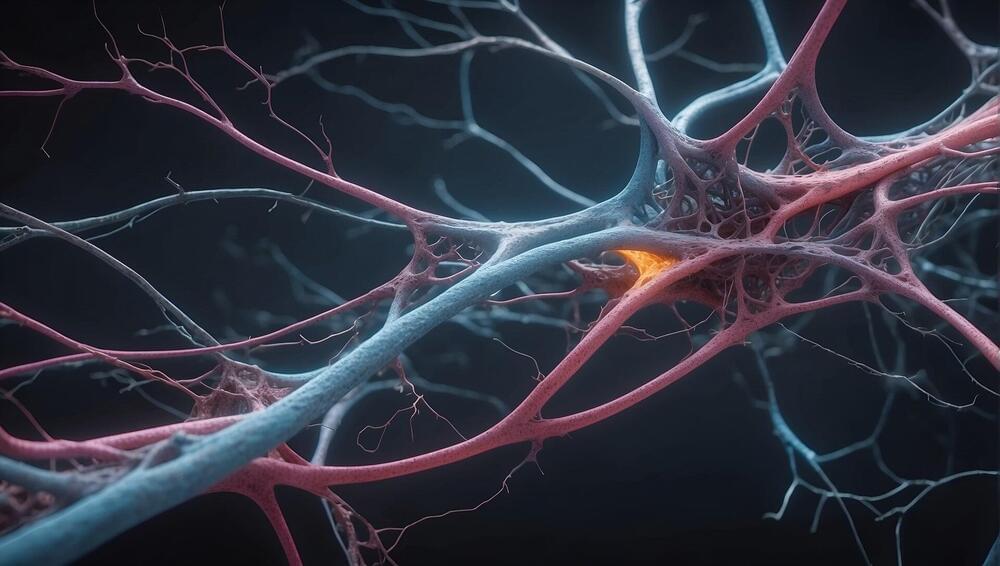Archive for the ‘life extension’ category: Page 41
Jul 8, 2024
An expedited screening platform for the discovery of anti-ageing compounds in vitro and in vivo
Posted by Shubham Ghosh Roy in categories: biotech/medical, genetics, information science, life extension
Restraining or slowing ageing hallmarks at the cellular level have been proposed as a route to increased organismal lifespan and healthspan. Consequently, there is great interest in anti-ageing drug discovery. However, this currently requires laborious and lengthy longevity analysis. Here, we present a novel screening readout for the expedited discovery of compounds that restrain ageing of cell populations in vitro and enable extension of in vivo lifespan.
Using Illumina methylation arrays, we monitored DNA methylation changes accompanying long-term passaging of adult primary human cells in culture. This enabled us to develop, test, and validate the CellPopAge Clock, an epigenetic clock with underlying algorithm, unique among existing epigenetic clocks for its design to detect anti-ageing compounds in vitro. Additionally, we measured markers of senescence and performed longevity experiments in vivo in Drosophila, to further validate our approach to discover novel anti-ageing compounds. Finally, we bench mark our epigenetic clock with other available epigenetic clocks to consolidate its usefulness and specialisation for primary cells in culture.
We developed a novel epigenetic clock, the CellPopAge Clock, to accurately monitor the age of a population of adult human primary cells. We find that the CellPopAge Clock can detect decelerated passage-based ageing of human primary cells treated with rapamycin or trametinib, well-established longevity drugs. We then utilise the CellPopAge Clock as a screening tool for the identification of compounds which decelerate ageing of cell populations, uncovering novel anti-ageing drugs, torin2 and dactolisib (BEZ-235). We demonstrate that delayed epigenetic ageing in human primary cells treated with anti-ageing compounds is accompanied by a reduction in senescence and ageing biomarkers. Finally, we extend our screening platform in vivo by taking advantage of a specially formulated holidic medium for increased drug bioavailability in Drosophila. We show that the novel anti-ageing drugs, torin2 and dactolisib (BEZ-235), increase longevity in vivo.
Jul 8, 2024
Alzheimer’s-related synapse damage reversed by synthetic protein
Posted by Paul Battista in categories: biotech/medical, life extension, neuroscience
Researchers at the Okinawa Institute of Science and Technology (OIST) have developed a potentially transformative approach to treating Alzheimer’s disease, A team from the former Cellular and Molecular Synaptic Function Unit have reported significant progress in reversing cognitive decline and restoring memory in transgenic mice using a synthetic protein. The findings, published in Brain Research, offer hope for a viable treatment to alleviate the debilitating symptoms associated with this neurodegenerative condition.
“We successfully reversed the symptoms of Alzheimer’s disease in mice,” explained Dr Chia-Jung Chang, first author of the study and presently a member of the Neural Computation Unit at OIST. “We achieved this with a small, synthetic peptide, PHDP5, that can easily cross the blood-brain barrier to directly target the memory center in the brain [1].”
Longevity. Technology: There is a pressing need to find effective treatments for Alzheimer’s; along with other forms of dementia, this debilitating disease currently affects approximately 55 million people worldwide, and this number is predicted to nearly double every 20 years, reaching 78 million in 2030 and 139 million in 2050. As well as a health burden, Alzheimer’s is an economic burden – the annual global cost of dementia has now rocketed to more than US$1.3 trillion, with a projected rise to US$2.8 trillion by 2030 on the horizon [2].
Jul 7, 2024
Meet the presidential hopeful who wants to end death
Posted by Zoltan Istvan in categories: biological, geopolitics, life extension, robotics/AI, transhumanism
A new feature story out on book Transhuman Citizen:
A former presidential candidate who believes a dramatic increase in science funding can help humans achieve biological immortality has told Newsweek he is considering a third White House run in 2028.
Zoltan Istvan ran as an independent candidate during the 2016 presidential election when he attracted widespread media attention for driving a bus modified to look like a coffin from San Francisco to Washington D.C., to illustrate his believe that death can be overcome.
Continue reading “Meet the presidential hopeful who wants to end death” »
Jul 7, 2024
Altos rejuvenation research in mice signposts healthspan extension
Posted by Montie Adkins in categories: biotech/medical, life extension
So, they get very healthy but only live 24% longer no matter how many more times they use the treatment. I wonder what the telomere effect is. And what they are doing is not the same as what Aubrey’s mouse experiment is doing.
Altos Labs Co-founder and Chief Scientist Rick Klausner participated in a panel discussing efforts to increase human healthspan by combatting age-related diseases at this year’s Aspen Ideas Health conference.
Continue reading “Altos rejuvenation research in mice signposts healthspan extension” »
Jul 7, 2024
What’s Optimal For Grip Strength During Aging?
Posted by Mike Lustgarten in category: life extension

Join us on Patreon! https://www.patreon.com/MichaelLustgartenPhDDiscount Links: NAD+ Quantification: https://www.jinfiniti.com/intracellular-nad-test/Use Cod…
Jul 5, 2024
Combined dasatinib and quercetin treatment contributes to skin rejuvenation through selective elimination of senescent cells in vitro and in vivo
Posted by Shubham Ghosh Roy in category: life extension
The skin’s protective functions are compromised over time by both endogenous and exogenous aging. Senescence is well-documented in skin phenotypes, such as wrinkling and sagging, a consequence of the senescence-associated secretory phenotype (SASP) that involves the accumulation of senescent fibroblasts, chronic inflammation, and collagen remodeling. Although therapeutic approaches for eliminating senescent cells from the skin are available, their efficacy remains unclear. Accordingly, we aimed to examine the effects of dasatinib in combination with quercetin (D + Q) on senescent human skin fibroblasts and aging human skin. Senescence was induced in human dermal fibroblasts (HDFs) using approaches such as long-term passaging, ionizing radiation, and doxorubicin treatment. The generated senescent cells were treated with D + Q or vehicle.
Jul 5, 2024
Major Fusion Milestone: Princeton Scientists Discover Game-Changer in Reactor Design
Posted by Shubham Ghosh Roy in categories: life extension, particle physics
New research indicates that plasma fusion heat spreads more evenly in tokamak reactors, suggesting a reduced risk of damage to critical components, thereby improving reactor longevity and efficiency.
According to researchers from the U.S. Department of Energy’s (DOE) Princeton Plasma Physics Laboratory (PPPL), Oak Ridge National Laboratory, and the ITER Organization (ITER), the intense exhaust heat produced by fusing plasma in a commercial-scale reactor might not be as damaging to the reactor’s interior as previously believed.
“This discovery fundamentally changes how we think about the way heat and particles travel between two critically important regions at the edge of a plasma during fusion,” said PPPL Managing Principal Research Physicist Choongseok Chang, who led the team of researchers behind the discovery. A new paper detailing their work was recently published in the journal Nuclear Fusion, following previous publications on the subject.
Jul 4, 2024
Key mechanisms identified for regeneration of neurons
Posted by Saúl Morales Rodriguéz in categories: biotech/medical, life extension, neuroscience
Neurological disorders, such as trauma, stroke, epilepsy, and various neurodegenerative diseases, often lead to the permanent loss of neurons, causing significant impairments in brain function. Current treatment options are limited, primarily due to the challenge of replacing lost neurons.
Direct neuronal reprogramming, a complex procedure that involves changing the function of one type of cell into another, offers a promising strategy.
In cell culture and in living organisms, glial cells—the non-neuronal cells in the central nervous system—have been successfully transformed into functional neurons. However, the processes involved in this reprogramming are complex and require further understanding. This complexity presents a challenge, but also a motivation, for researchers in the field of neuroscience and regenerative medicine.
Jul 4, 2024
Tesla Model Y tops Sweden auto registrations in the first half of 2024
Posted by Shailesh Prasad in categories: climatology, life extension, sustainability
The Tesla Model Y has topped Sweden’s automotive registrations regardless of powertrain type in the first half of 2024, as shown in new data.
The Model Y was the most-registered vehicle in Sweden in the first six months of this year, according to data from Mobility Sweden reported by Carup on Monday. The Model Y topped the charts overall with 7,386 units registered, despite a 20 percent decline in overall EV sales. The Model 3 landed 14th overall in the six-month period, while electric options from Volvo, Toyota, Polestar, and Volkswagen were also some of the most registered.
“It is gratifying that the proportion of electric cars reached the best for the year in June, but at the same time we see a stagnant market, which leads to a gradually aging vehicle fleet,” said Mattias Bergman, CEO of Mobility Sweden. “In order to meet the climate goals and strengthen Sweden’s competitiveness, it is crucial that electrification is accelerated.”
















